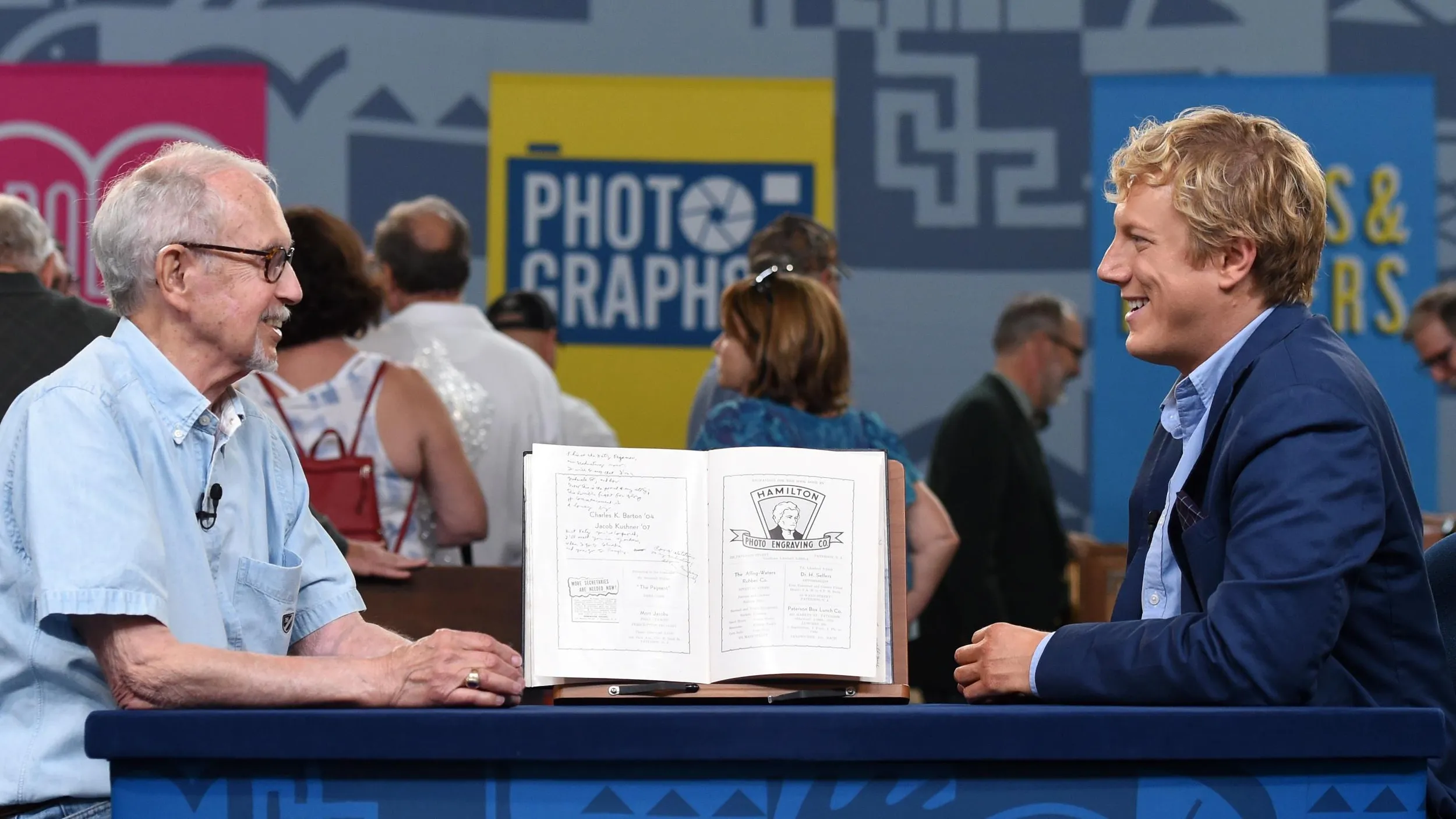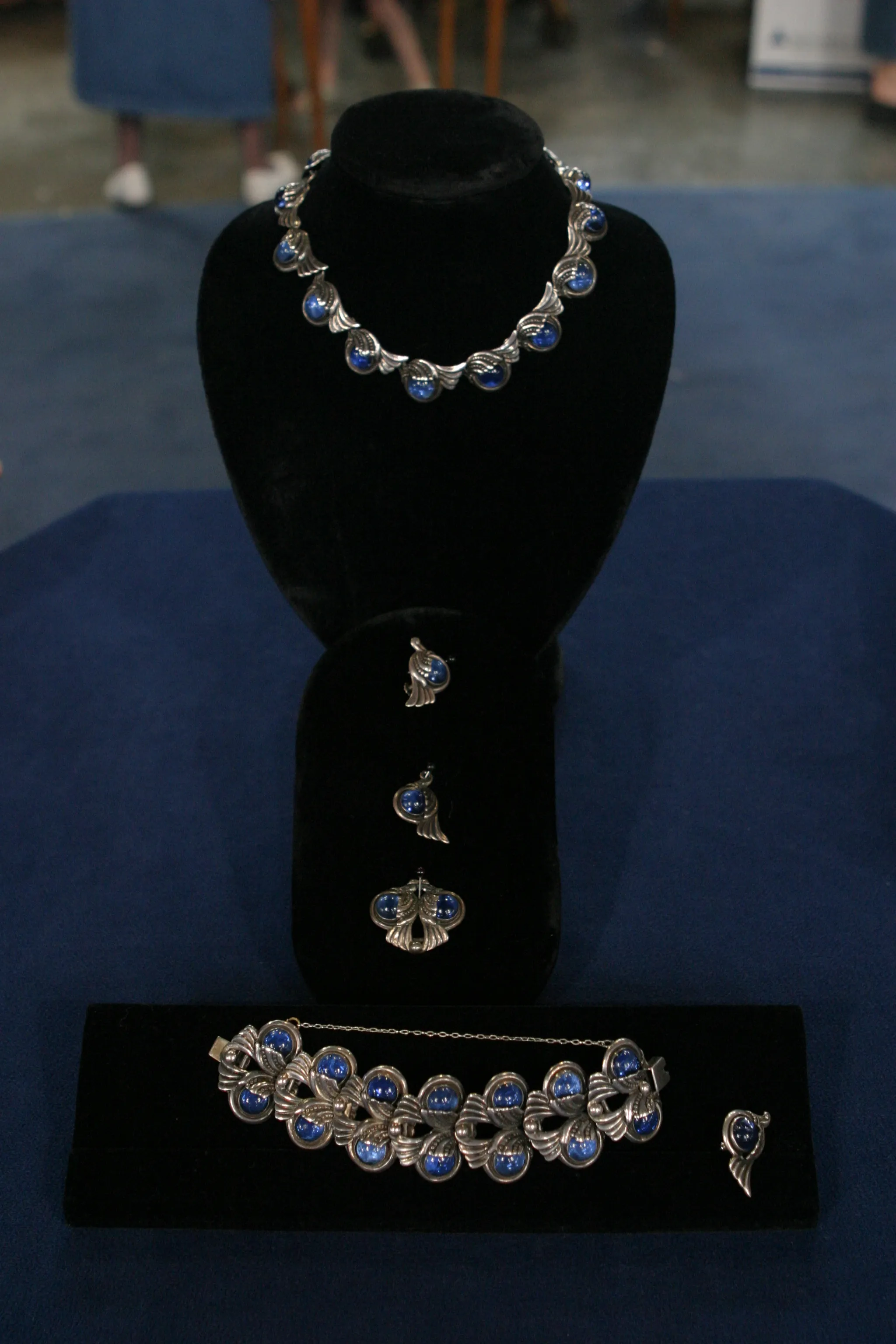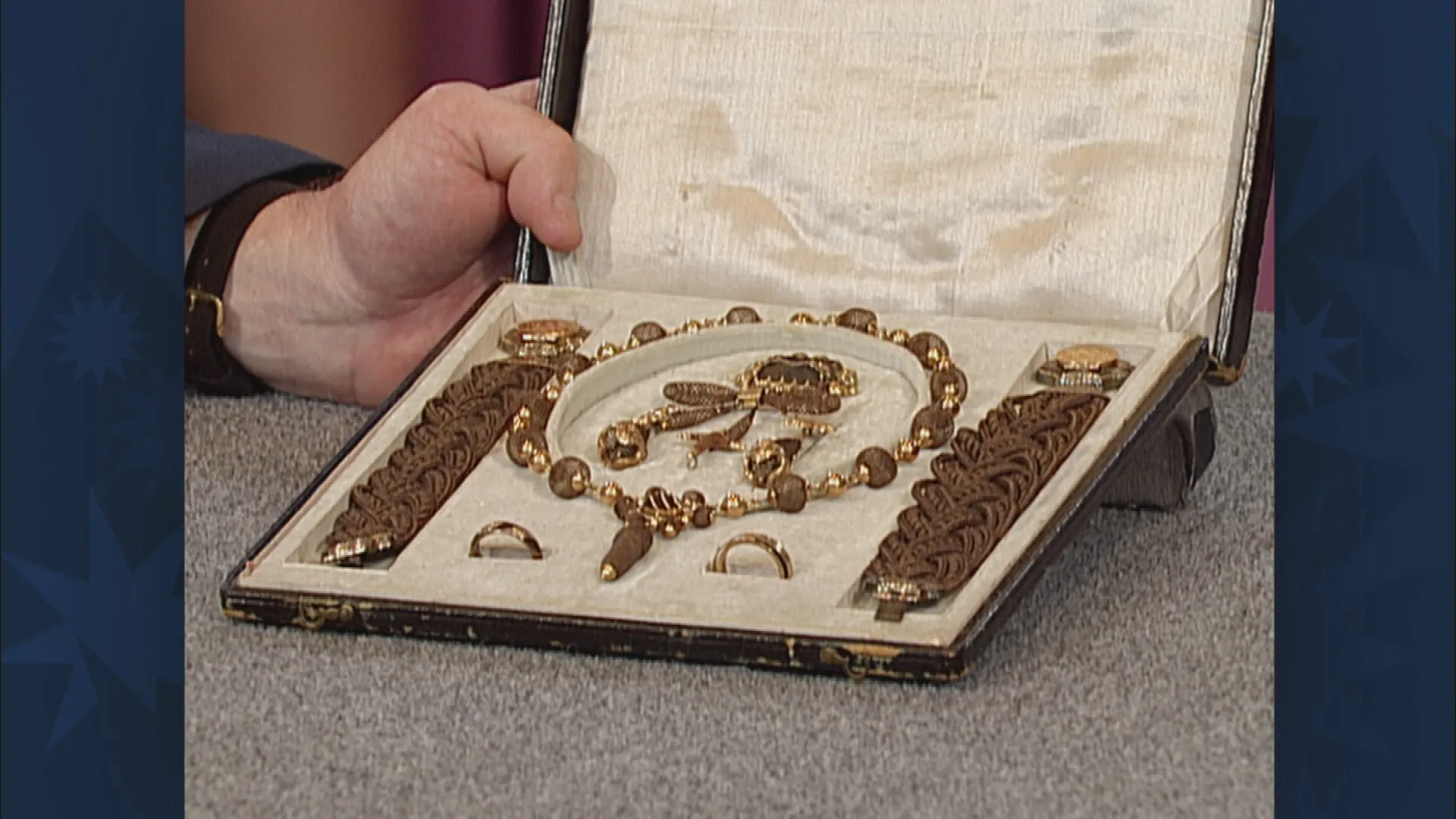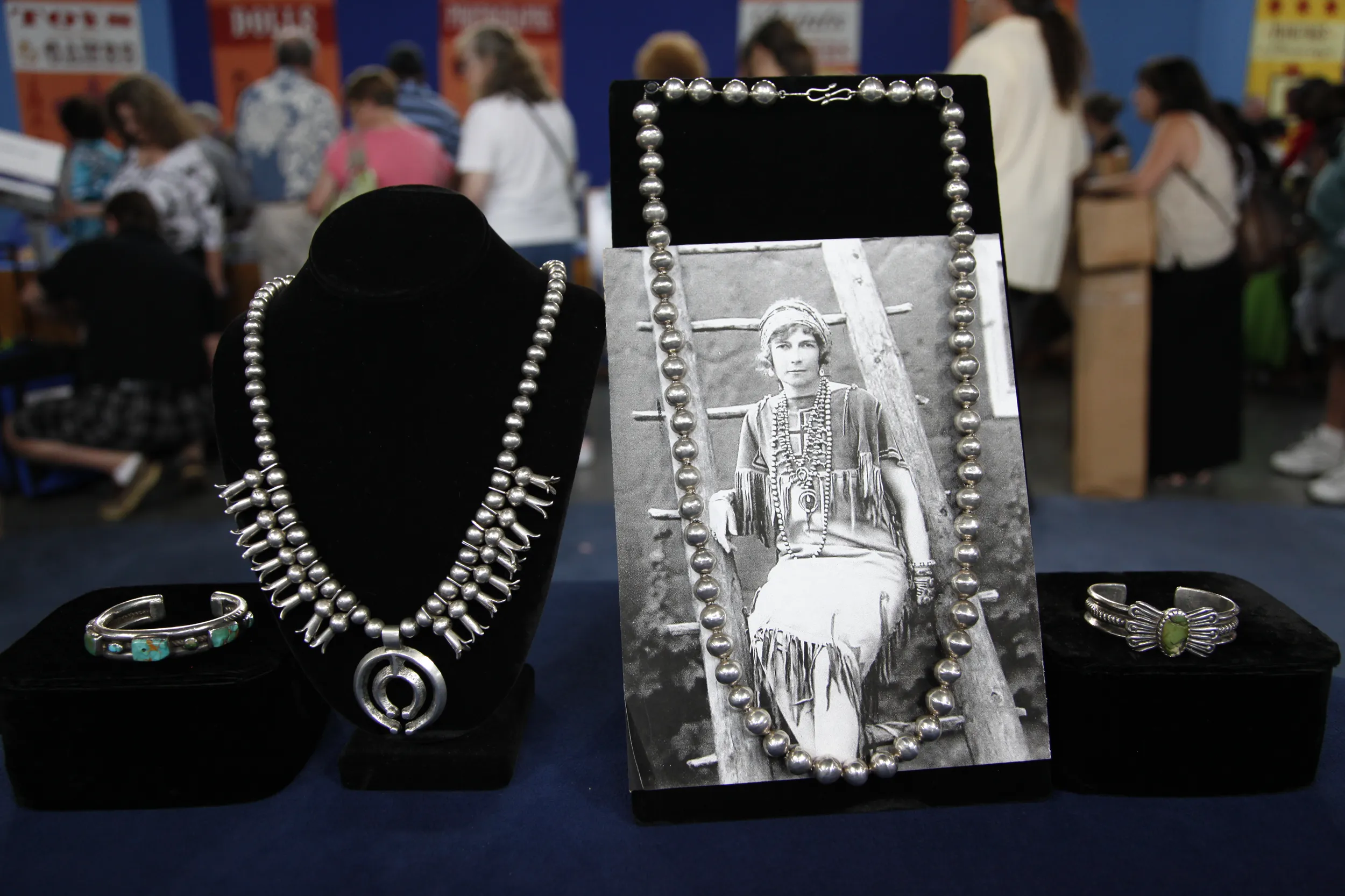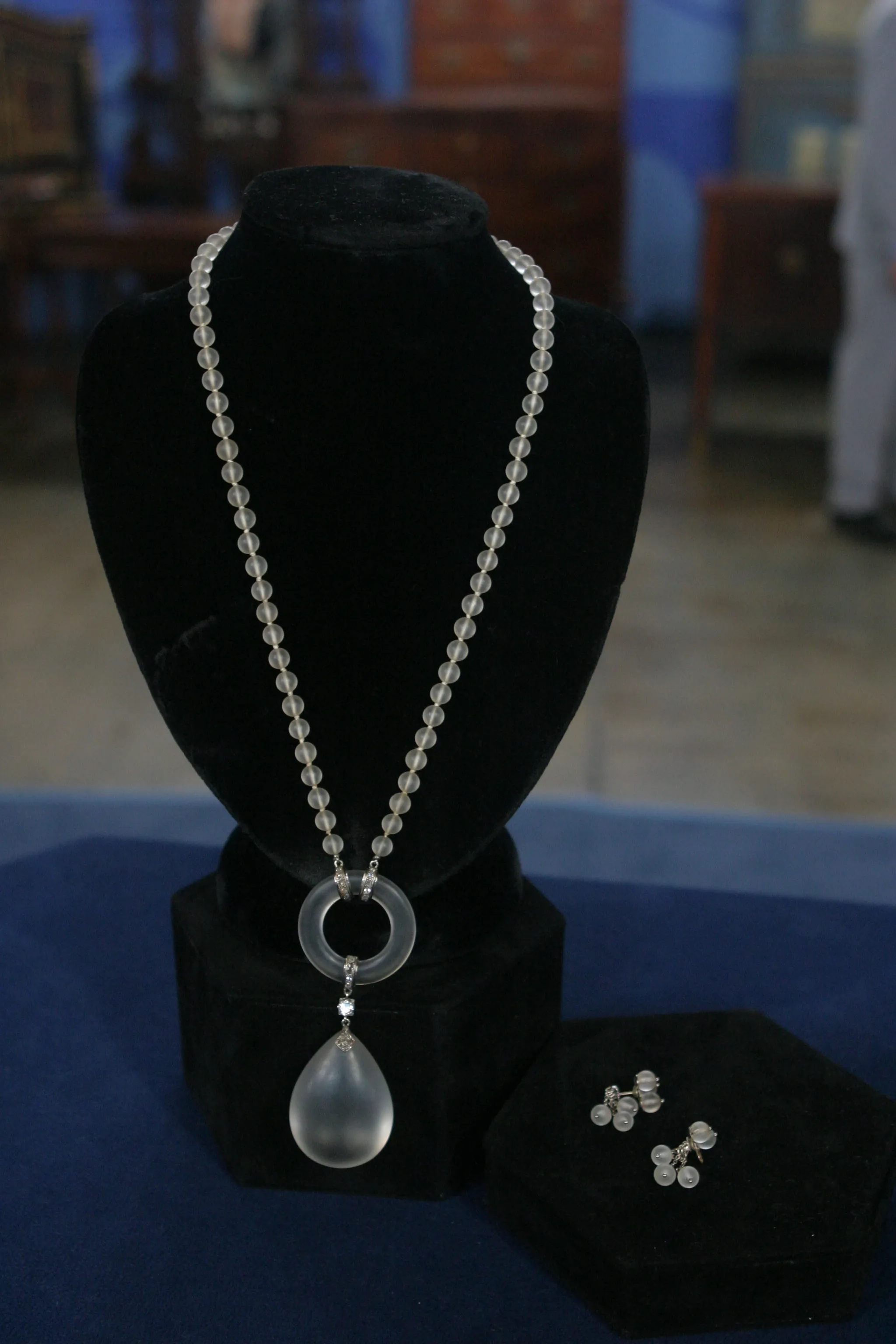GUEST: It's a piece that was given to my mother by a man who was the president of the Boston Hebrew Teacher's College, who was a scholar of Hebrew and also Greek literature. He gave this to my mother when they were both, uh, in their 70s, so probably in the 1980s. And it's a piece that was done, I think, by an American Jewish artist. It represents the Torah, the books of the Bible. Also, my mother wrote that it symbolizes the tree of life in the midst of the garden, and the tree of knowledge of good and evil, Genesis 2:7. My mother was a librarian, so she kept notes about a lot of things.
APPRAISER: Wonderful.
GUEST: And it looks to me like there's Adam on this side and Eve on this side, and it's all done in cut silver that's all soldered together.
APPRAISER: Yeah, it's beautifully done. It is made out of silver. So… it represents Adam and Eve depicted in the garden here from Genesis. It's actually signed by the artist, and we'll turn it over here. So the artist is a man named Ilya Schor. So he was born in Poland, he studied on a grant in Paris, and fled Paris with his wife at the beginning of the war to this country, and he really embodied a lot of what was sort of the, um, idealized view of sort of eastern European shtetl life in the arts that he created. It's signed "I. Schor, New York," and this little dove device is something he often used as part of his signature. It has the references to Genesis, but it also has a lot of whimsy. It's got a little squirrel, and squirrels are something that often appear both in his work and work of Polish folk art, Jewish folk art of the time, of the 19th century and later. And it's just beautifully done. There's a lot of, as you say, the cut work of the silver, but a lot of detail and a lot of, um, energy and life to the design. So the necklace was made in New York, probably it could have been in the 1940s, it could be late – as late - as the mid to late '50s. He died in 1961 but had a very, very active career. He created silver, he did a lot of ceremonial work, Torah finials and shields, Torah pointers. He is also known for wood engravings for illustrations for some well-known Jewish texts. He did paintings, so he was really a Renaissance artist. Very accomplished, but in a lot of different areas. His work is represented in many museums. Market value today, I'd say between $5,000 and $7,000.
GUEST: Really?
APPRAISER: A beautiful piece.
GUEST: Well, thank you so much. I didn't come for the value, I came for the story, and you really fleshed that in beautifully.
APPRAISER: Good, thank you.
GUEST: I appreciate it.


